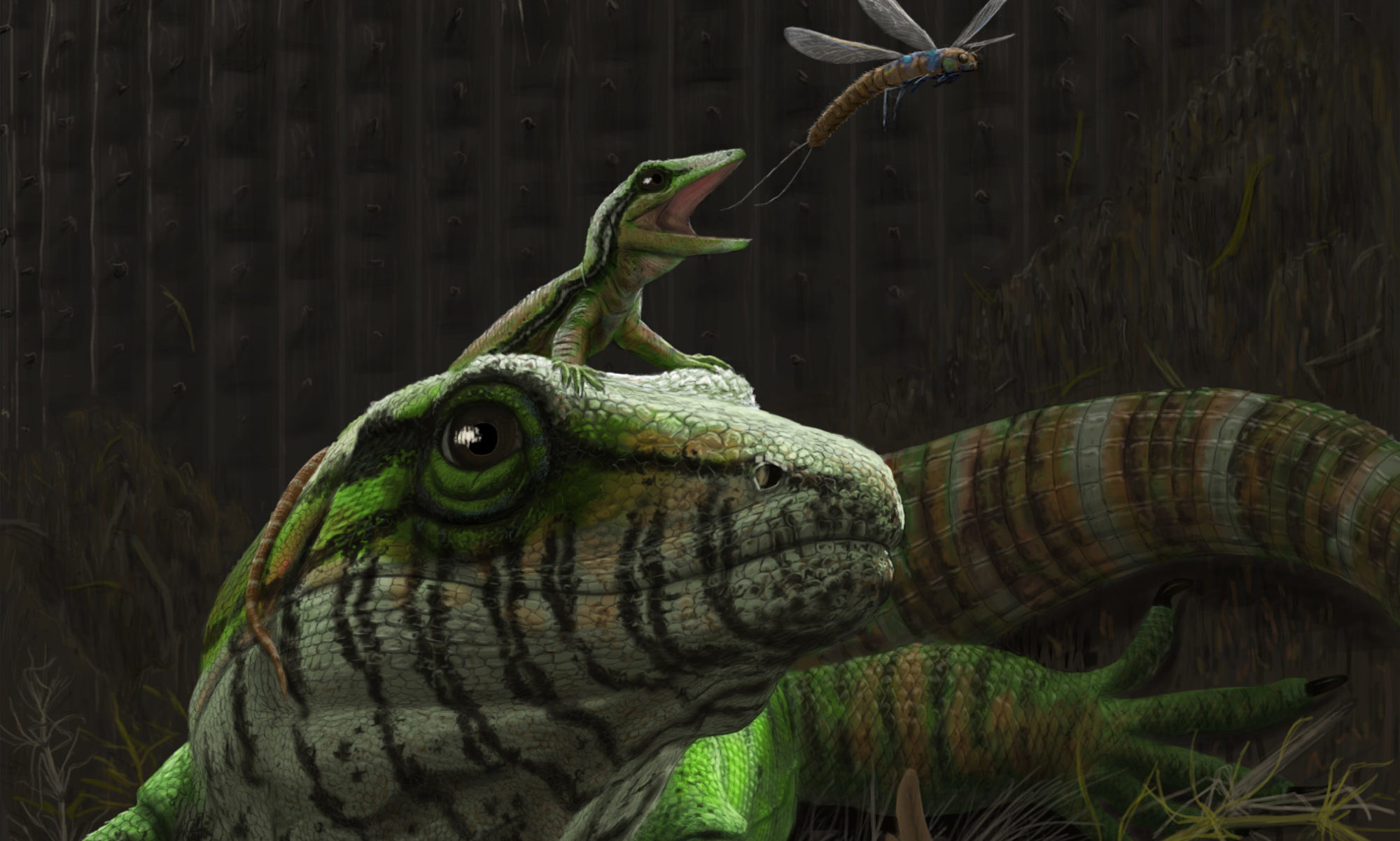Current field work involves annual expeditions to the Carboniferous localities of Nova Scotia. Field work at UNESCO World Heritage site of Joggins and historic sites on Cape Breton Island is providing new insights into the diversity and paleoecology of early tetrapod communities. You can follow our updates on twitter here: #CarletonNovaScotiaPaleo #CanadianPalaeo #MaddinLab
Our Team collaborates with the Nova Scotia Museum and the Joggins Fossil Cliffs. Valuable contributors include Brian Hebert, Matthew Stimson, John Calder, Melissa Grey, Tim Fedak, Andrew MacRae, as well as members of their home institutions.
Joggins (Pennsylvanian, Bashkirian): The Joggins Fossil Cliffs (JFC) is probably the most well-studied locality in Nova Scotia from a vertebrate paleontology perspective. Located on the Bay of Fundy, near the village of Joggins, the extensive cliff exposures contain the famous standing lycopsid trees and the tetrapod fossils trapped within them. Additional specimens have been recovered from outside the stumps, though these are much rarer. Both terrestrial and aquatic communities are represented at Joggins. The earliest reptile and synapsid are found at this site.
Eastern Cape Breton Coastline (Pennsylvanian, Moscovian): This stretch of coastline exposes portions of the Morien Group, including the Syndey Mines Formation. We prospect this coastline annually. This is where our recent discovery of a Permian-like fauna is derived from.
Florence (Pennsylvanian, Moscovian): The locality was a former strip mine, which has since been filled in by reclamation efforts. Vertebrates were found in erect trees, like at the older Joggins site. This is the locality where the specimens of Archaeothyris and Paleothyris were recovered by Romer in 1956.
Grang Etang (Mississippian, Visean): Fossils are seen entirely from within the Pomquet Formation, Mabou Group. Spines of the acanthodian Gyracanthus, lungfish tooth plates (Sagenodus) and parts of a rhizodontid represent the fish fauna. Embolomere elements have also been found, as well as tetrapod trackways.
Parrsboro (Mississippian, Visean): Several exposures of Carboniferous rock exist in the Parrsboro area. Primarily known for its Triassic and Jurassic discoveries, including Canada’s oldest dinosaur, the region is of interest for Paleozoic paleontology also. The main locality is located within the cove between Cape Sharp and Partridge Island. The beds are nearly vertical in orientation and are filled with impressive ripple marks and mud cracks. These beds are considered to be the most prolific Mississippian tetrapod trackways in the Maritimes Basin. We are working on new fish fossils from this site.
Point Edward (Mississippian, Visean): The Point Edward Formation represents a mixed fluvial and lacustrine environment. A large embolomere jaw was collected by Romer in the 50s, the counterpart of which was discovered by Baird 13 years later. Another embolomere assemblage was collected by Bell in the early 1900s. It was not possible to assign this assemblage to a single taxon with certainty (see Adams et al., In press). We have collected new embolomere fragments and fish elements. Acanthodian fin spines are present, as well as teeth of another fish Ctenoptychius.
Relevant publications:
Maddin HC, Mann A, Hebert B. 2019. Varanopid from the Carboniferous of Nova Scotia reveals evidence of parental care in amniotes. Nature Ecology & Evolution 4: 50-56.
Adams GR**, Mann A*, Maddin HC. Embolomerous tetrapod remains from Point Edward, Nova Scotia. Canadian Journal of Earth Sciences (In Press).
Mann A*, Gee B, Pardo J, Marjanovic D, Adams GR*, Maddin HC, Anderson JS. Reassessment of historic ‘microsaurs’ from Joggins, Nova Scotia, reveals hidden diversity in the earliest amniote ecosystem. Papers in Palaeontology (In Press).










